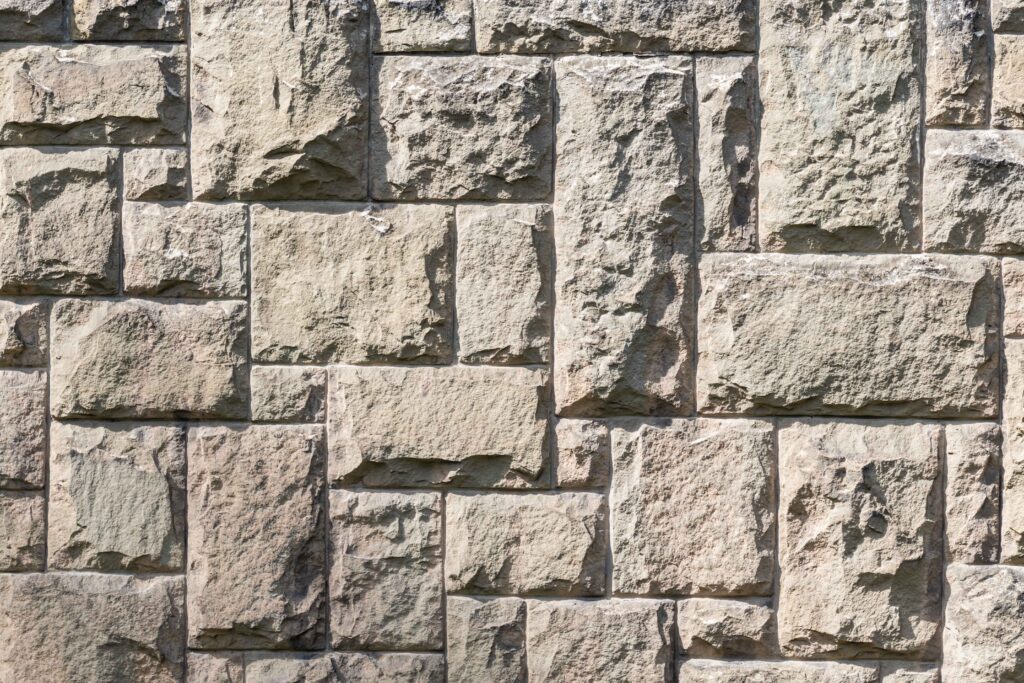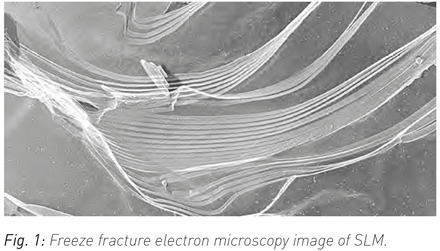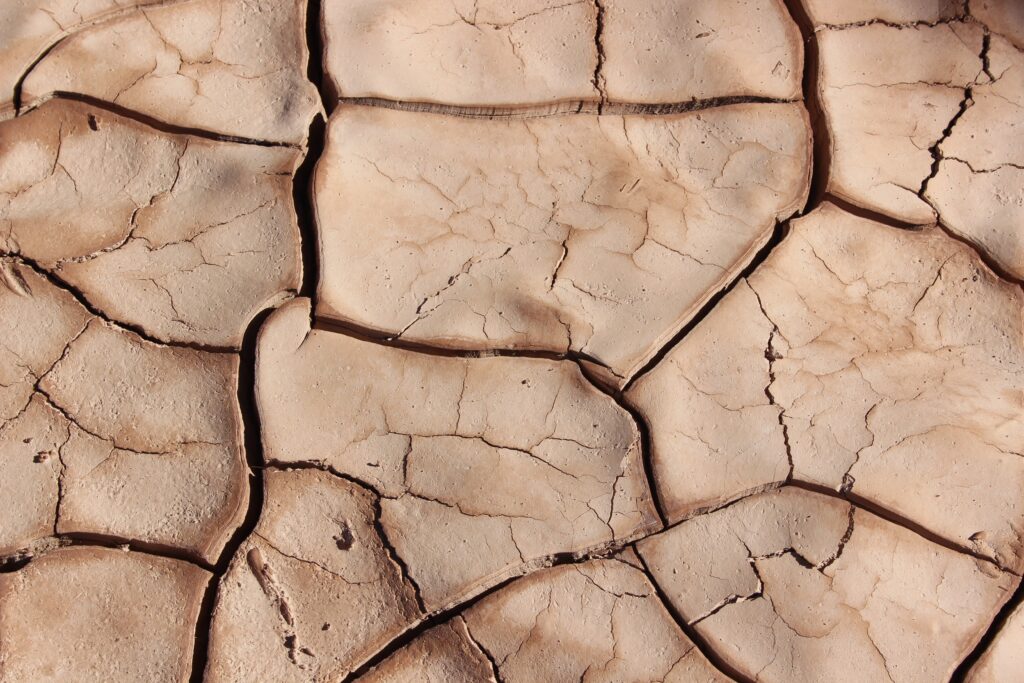Innovative natural skin care
Dr. med. Heinz Lüscher
More and more people also want effective products with natural ingredients in cosmetics. Especially for dry, irritated, sensitive and/or mature skin, the demands on a product are higher. Fortunately, there are highly effective skin care products with 100% natural ingredients that penetrate deep into the skin, build it up and sustainably moisturize and protect it (“Skin Repair Effect”). Because if we want to take care of our health and do something good for our body, we should not only pay attention to what we eat, but also what substances we absorb through our skin! A cosmetic that is based on a “lecithin-based emulsifier system” and contains selected active ingredients is suitable for this purpose.
The top layer of our skin
To understand the effect of such a skin care product, you first need to know the most important things about the complex function of the skin, or rather, about the structure of the outermost layer of the skin.
Epidermis

The uppermost layer of skin, the so-called epidermis, consists of a dense network of cells and forms a protective barrier against external influences such as UV rays, microorganisms, allergens or environmental toxins and prevents excessive evaporation through the skin (transepidermal water loss=TEWL). The epidermis has neither blood vessels nor nerves. Its thickness depends on the degree of its mechanical stress and varies from about 0.03 to 2 millimeters. The epidermis continuously renews itself from the inside out, i.e. the skin cells “migrate” upwards to the skin surface after their formation (cell migration), slowly change and become keratinized in the uppermost layer. Eventually, the keratinized skin cells peel off. In this way, our skin is constantly renewing itself.

Stratum corneum
This uppermost layer of the epidermis is called the horny layer or stratum corneum, its thickness is about 40% of the epidermis. It consists of special fused skin cells called corneocytes. These contain keratin, a fibrous protein that prevents too much water from evaporating from the skin surface. Corneocytes are held tightly together (“glued together”) by means of so-called desmosomes. They develop from keratinocytes, which continuously migrate through the various layers of the stratum corneum to the skin surface, becoming increasingly keratinized. Among other things, the cell nucleus is lost in the process. These dead, flattened keratinocytes in the uppermost layer are called corneocytes.
Extracellular lipid matrix – Skin lipid matrix
The skin cells are embedded in a so-called extracellular lipid matrix. This consists of approx. 120-150 lamellarly arranged lipid layers (fat layers). The barrier function is mainly fulfilled by these extracellular lipids. This unique and extremely complex structure is a functional part of the protective function of our skin against harmful influences and prevents excessive water loss. The extracellular lipid matrix can also be called “cell mortar”.

Simplified, the stratum corneum consists of two components and can be compared to a stone wall: The protein-rich horny cells (corneocytes) correspond to the stones and the extracellular lipid matrix to the mortar.
“Wash-out effect” and its consequences
Now it is easier to imagine why damaging effects on this complex system can have such a serious impact on the functionality of the skin barrier. The synthetic high-performance emulsifiers in today’s skin care products are a good example: they attack the protective lipid layer by solubilizing (making soluble) the skin lipids (e.g. ceramides) it contains. The next time the skin comes into contact with water (washing hands, showering, bathing), the lipids are washed out (“wash-out effect”)! The skin becomes drier, more permeable and more sensitive to foreign substances, the disposition for various skin diseases (e.g. eczema), but also premature skin aging increases. This damage to the skin (more precisely to the stratum corneum) can be detected and measured very well by determining the transepidermal water loss (TEWL). Damaged skin shows a significantly higher TEWL. Numerous studies of certain skin diseases prove the high importance of the extracellular lipid matrix for the protective barrier property of the stratum corneum. A damaged lipid matrix weakens the natural protective function of the skin. Chronic inflammatory reactions are the result, which in turn lead to even more damage in the skin.
What requirements should a natural active cosmetic meet?
Be it moisturizing creams for the whole body, anti-aging or wrinkle-reducing creams for the face, effective and natural skin care should support, rebuild and protect the extracellular lipid matrix and sustainably moisturize the skin (“Skin Repair Effect”). Such products can imitate the extracellular lipid layer in the outermost layer of the skin and rebuild it because of their similarity. An ideal basis for such an effectively acting cosmetic is a natural “lecithin-based emulsifier system”, which is very similar to the structure of the extracellular lipid matrix. Under no circumstances should synthetic emulsifiers be included. This is the only way to prevent a “wash-out effect”. This becomes all the more important the more damaged (dry, irritated, reddened) the skin already is.

Lecithin-based Emulsifier System
The natural “Lecithin-based Emulsifier System” is a base formulation, other ingredients and active ingredients can be added to this base. This formulation is present as a three-dimensional lamellar structure and is very similar to the lamellar extracellular lipid matrix within the stratum corneum. Gaps in the lipid matrix are closed, inflammatory reactions decrease and the skin can gradually regain its full functionality. The natural protective function of the skin is restored. Another advantage of the lamellar structure of the “lecithin-based emulsifier system” is that the individual active ingredients are trapped between the lamellae and thus available to the skin for longer, resulting in a stronger and longer-lasting effect.
What are lecithins?
Lecithins are phospholipids and important structural components of biological membranes (cell walls). They are found in all plants and living organisms, including the human body. Lecithins enable the emulsification (mixing) of fats in water and are thus important natural emulsifiers. They can also increase the bioavailability (absorption by the body / skin) of active ingredients. Phospholipids such as hydrogenated phosphatidylcholine from sunflower have, among other things, the extremely positive property of being incorporated into the lipid matrix. Together with other lipids essential for the skin, such as squalane, ceramides and phytosterols, such a product leads to a demonstrable regeneration of the damaged lipid matrix (“skin repair effect”).

Treatment of dry, irritated skin
A sufficient water content in the stratum corneum is the prerequisite for healthy and elastic skin. Disturbances of the skin barrier (skin lipid matrix) and a reduction in water-binding molecules lead to chronic moisture loss and thus to dry, irritated skin. To counter this problem, the skin’s barrier function and water-binding capacity must be restored and the associated inflammatory reactions stopped.
This can be achieved by combining nourishing and anti-inflammatory substances from nature. For example, the following:
A “Lecithin-based Emulsifier System”
As already mentioned, a “lecithin-based emulsifier system”, whose effect has been proven by clinical studies (in vivo), can serve as a natural, purely plant-based formulation.
A lecithin-based active ingredient with birch bark extract and prickly pear seed oil
A mix of potent, natural moisturizers whose effects have also been proven by clinical studies (in vivo).
Again, the base is hydrogenated lecithin, which mimics the lamellar structure of the extracellular lipid matrix and helps to regenerate the skin lipid barrier and improve water retention. Birch bark extract also has a high potential to improve skin barrier function, namely by stimulating the formation of epidermal proteins within the skin, which also has an impact on moisture retention. The oil from prickly pears contains numerous valuable ingredients, especially linoleic acid, which strengthens the skin barrier and also enables it to retain water better. Linoleic acid contributes to the formation of ceramides, which are the essential lipids for the structure of the epidermal lipid barrier. With these substances you get a highly potent moisturizing mixture, which also has an anti-inflammatory, anti-itching and wound-healing effect on the skin.
D-Panthenol
D-panthenol, also called dexpanthenol or provitamin B5, is a substance that is well known and researched. It is contained in wound creams, among other things. D-Panthenol has been used for a very long time for topical application on skin and mucous membranes. It keeps the skin moist and elastic, stimulates the formation of new skin cells and assists in wound healing. It also has anti-inflammatory and antipruritic properties.
α-Bisabolol
The oil-soluble α-bisabolol is the main component of chamomile oil, which is extracted from the true chamomile (Matricaria chamomilla). The α-bisabolol has anti-inflammatory, antibacterial and skin-soothing effects and is therefore used to regenerate the skin and promote wound healing.
Almond oil
Almond oil impresses with a very high proportion of essential monounsaturated and diunsaturated fatty acids (>90%), with oleic acid and linoleic acid standing out in particular. Oleic acid is a monounsaturated fatty acid (an omega-9 fatty acid). Oleic acid-containing oils spread well on the skin and create a soft skin feeling; they also make the lipid barrier more permeable and more receptive to other, lipophilic active ingredients. Linoleic acid is a doubly unsaturated fatty acid (an omega-6 fatty acid) and is converted in the body to γ-linolenic acid. From this, the body forms the anti-inflammatory prostaglandin E1. This can lead to a noticeable improvement in the skin situation in atopic eczema (neurodermatitis), for example. Linoleic acid, when applied externally, is able to counteract skin irritation, is effective against keratinization and excessive sebum production (sebum production). The oil keeps the skin supple and moisturized and also penetrates very deeply into the stratum corneum.
Jojoba oil
Chemically, jojoba oil is a liquid wax consisting of over 97% liquid, long-chain wax esters. These are similar to the esters of which human sebum is composed and have the effect that jojoba oil mixes excellently with it and forms a delicate, non-occlusive, i.e. permeable to oxygen and water vapor, lipid film. Jojoba oil reliably and long-lasting protects the stratum corneum from water loss and cannot be metabolized by microorganisms. This makes the oil an excellent lipid component especially for blemished skin.
Mango butter
Mango butter, also known as mango seed oil, is extracted from the seeds of the mango fruit. Mango butter contains the fatty acids stearic acid, oleic acid, palmitic acid, linoleic acid, arachidic acid, as well as tocopherols (vitamin E form, antioxidant). Mango butter gives the skin suppleness and elasticity and supports cell renewal and wound healing. It moisturizes the skin and is well absorbed into the skin layers.
The resulting lotion is very mild and can be used even on severely damaged skin. After just a few applications, the skin feels significantly more elastic and silky smooth (Silk Skin Feeling). The lotion should be perfumed only very sparingly for reasons of compatibility.
Indication and application
Indication: Such a product is generally suitable for all skin types and is particularly recommended for the treatment of dry, irritated and sensitive skin in adults. People with existing skin diseases can also benefit from it. In the case of very irritated skin (eczema, neurodermatitis), the effect / tolerance should be tried and tested at the beginning only on a small area of skin.
Application: Apply thinly and sparingly to the affected areas of the skin in the morning and evening and massage in thoroughly (massaging in improves the effect).
